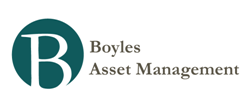Hussman Weekly Market Comment: The Recklessness of Quantitative Easing
Risk without benefit
Despite the probable lack of measureable benefits, further QE poses significant risks. It has already triggered a steep decline in the exchange value of the U.S. dollar, and threatens a destabilization of international economic activity, a loss of confidence, and the creation of a "boom-bust" cycle threatening to choke off any economic recovery that does emerge.
With regard to the U.S. dollar, market expectations of QE have provoked a "jump depreciation" of the greenback in recent months, neatly following the mechanism that the late MIT economist Rudiger Dornbusch described as "exchange rate overshooting" (see the August 23 market comment Why Quantitative Easing is Likely to Trigger a Collapse of the U.S. Dollar). Specifically, the expectation of a sustained period of lower U.S. interest rates, relative to other countries, requires an abrupt depreciation of the U.S. dollar by an amount large enough to set up expectations of a future appreciation. As a crude example, if the Fed suddenly introduces a policy that is expected to depress U.S. long-term interest rates by 1% for a period of 10 years, an immediate 10% depreciation of the U.S. dollar is required in order to preserve equilibrium in the international capital markets. Following the depreciation, international investors expect a 1% annual appreciation in the dollar to compensate for the 1% loss of interest. The plunging U.S. dollar and soaring price of gold in recent weeks are reflections of this dynamic.
Unfortunately, the likely economic impact of this rapid depreciation is not benign. The Fed might like to believe that a cheaper dollar will improve trade by increasing U.S. exports and reducing imports. However, over the past two decades, and particularly in recent years, U.S. imports have been much more elastic in response to fluctuations in the U.S. dollar than exports have been. This suggests that provoking further dollar depreciation is likely to have negative effects on the global economy, owing to a shift away from imports, but with few positive effects for U.S. economic activity. Indeed, a further depreciation would unnecessarily create a negative wealth effect for U.S. consumers facing higher prices for imported goods and services. Any improvement in the trade deficit would be largely offset by downward pressure on U.S. consumption.
As a side note, some observers have suggested that QE represents nothing more than "printing money." While this might be accurate if the Fed never reverses the transactions, the most useful way to think about QE, in my view, is as an attempt to directly lower interest rates by purchasing Treasury securities. This interest rate effect - not any major inflationary outcome - is the cause of the dollar depreciation we are observing here. There is little doubt that the effect of large continuing fiscal deficits is long-run inflationary, but as I've noted repeatedly over the years, there is little correlation between inflation and temporary - even large - variations in the monetary base. Inflation is ultimately a fiscal phenomenon born of unproductive spending, regardless of how that spending is financed.
- Links
FT interview with Google co-founder and CEO Larry Page (LINK) Related books: How Google Works, In The Plex Henry Blodget sits down with Clay Christensen (LINK) Related books: HEREHussman Weekly Market Comment: Losing Velocity: QE and the Massive Speculative...
- Hussman Funds Semi-annual Report
The U.S. economy appears suspended at the boundary between tepid growth and recession, requiring a trillion-dollar federal deficit and unprecedented monetary easing simply to maintain that position. The Federal Reserve continues a well-known and fully-announced...
- Hussman Weekly Market Comment: Charles Plosser And The 50% Contraction In The Fed's Balance Sheet
Especially good/important commentary from John Hussman this week.In my view, this is a major problem for the Fed, but is the inevitable result of pushing monetary policy to what I've called its "unstable limits." High levels of monetary base, per...
- Hussman Weekly Market Comment: The Recognition Window
Over the course of the market cycle, one of the primary areas of risk for stocks (and conversely, one of the best periods for Treasury bonds) is typically the "recognition window" where economic activity begins to deviate from the upward trend that is...
- Pershing Square - Bill Ackman's 2nd Quarter Letter
The Dollar, Inflation, and Risk to One’s Purchasing Power In light of the large amount of credit creation, quantitative easing, and dollar printing that has recently taken place in the United States, it is reasonable to be concerned about the future...

